In the dynamic programming world, Python has gained recognition as a leading contender for its straightforwardness and adaptability.
New to this language’s extensive toolset are AI-powered code generators – an innovative concept that redefines coding.
Python Code Generators are highly efficient tools designed to automate code creation, significantly aiding developers in their work. These advanced systems can generate scripts based on various inputs, including natural language descriptions, pseudocode, or even code snippets from different programming languages.
In this article, we’ll delve into how AI is transforming the programming landscape, making coding more efficient and accessible.
Wanna learn more about how you can leverage AI in your scripts?
Let’s get generating!
Python Code Generator Overview

Unlike conventional programming tools, a Python code generator focuses on streamlining the coding process, especially in complex projects involving large-scale processing and systems design.
Furthermore, it offers a unique blend of efficiency, customization, and error reduction.
Now, let’s check out some excellent features of these new code generators.
4 Key Features of Python Code Generators
Advanced NLP Techniques: Convert natural language inputs into functional code, making coding more intuitive and accessible, even for novices.
Machine Learning Adaptation: Incorporate machine learning to continuously refine code suggestions, enhancing accuracy and efficiency over time.
User-Friendly Interfaces: Offer real-time, conversational interactions for rapid and precise code generation, allowing for instant iterations and feedback.
Seamless Codebase Integration: Integrate smoothly with existing projects, understanding context and coding patterns to ensure compatibility and coherence.
Python code generators come equipped with a variety of attributes designed to tackle a variety of coding tasks. From generating boilerplate code to customizing code snippets for specific needs, they significantly cut down development time.
Next, we’ll explore practical examples.
How to Use a Python Code Generator: Top 4 Examples

The beauty of a Python code generator lies in its ability to simplify tasks such as creating functions programmatically. We’re going to make use of the EnterpiseDNA Code Generator and explore some examples.
Let’s take a deeper look.
Example 1: Data Analysis
User Input: “Write a function in Python that calculates the average from a list of numbers.”
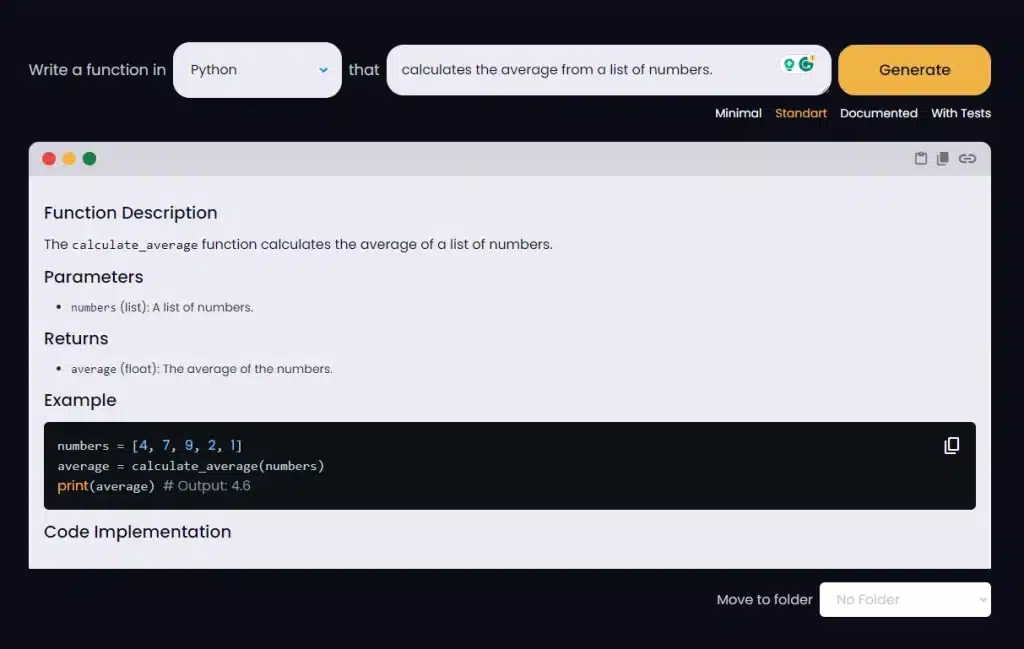
See how easy it is to generate the code necessary to calculate the average of a list of numbers?
Moving forward, let’s now explore how Python code generators facilitate web scraping tasks.
Example 2: Web Scraping
User Input: “Write a function in Python that scrapes titles from a webpage.”
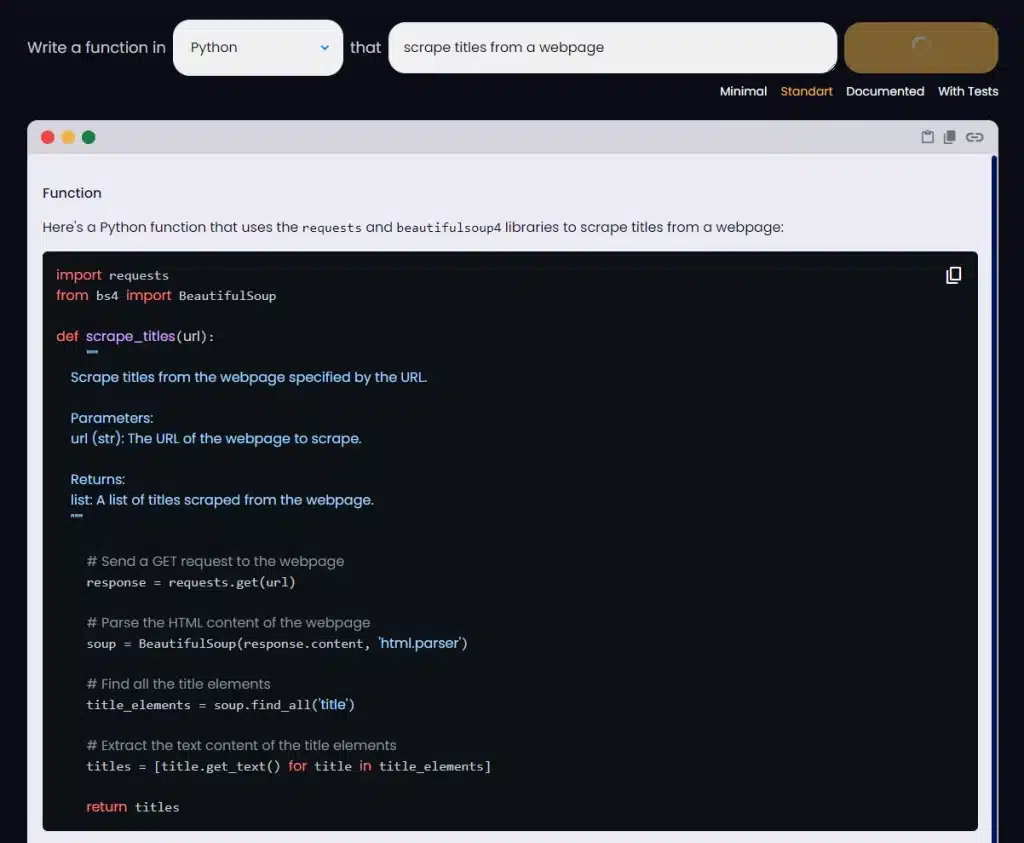
This code snippet demonstrates generating the code needed for web scraping, extracting all titles (H1 tags) from a given webpage.
Next, we’ll see the transformation of JSON schemas into classes.
Example 3: Python Class from JSON Schema
User Input: “Write a function in Python that creates a class for a JSON schema with fields: name (string), age (integer), and hobbies (list).”
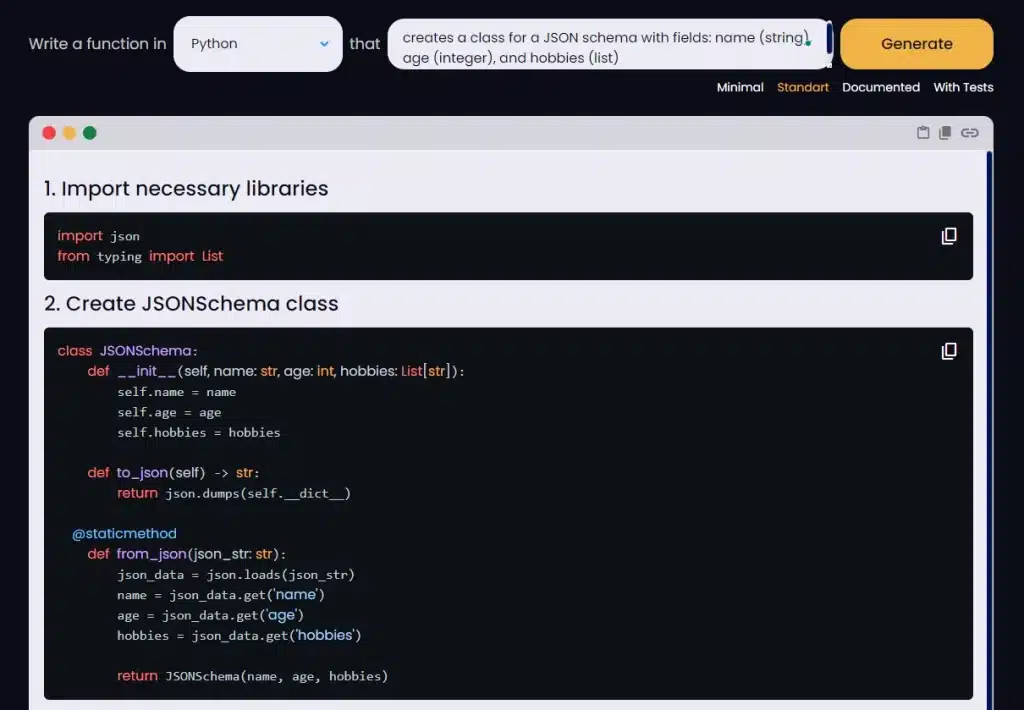
The Python Code Generator transforms a JSON schema into a class, simplifying object creation and data handling.
These examples showcase the versatility of this tool for creating code for various tasks.
Example 4: API Interaction
User Input: “Write a Python function that interacts with a specific REST API to retrieve and display user data.”
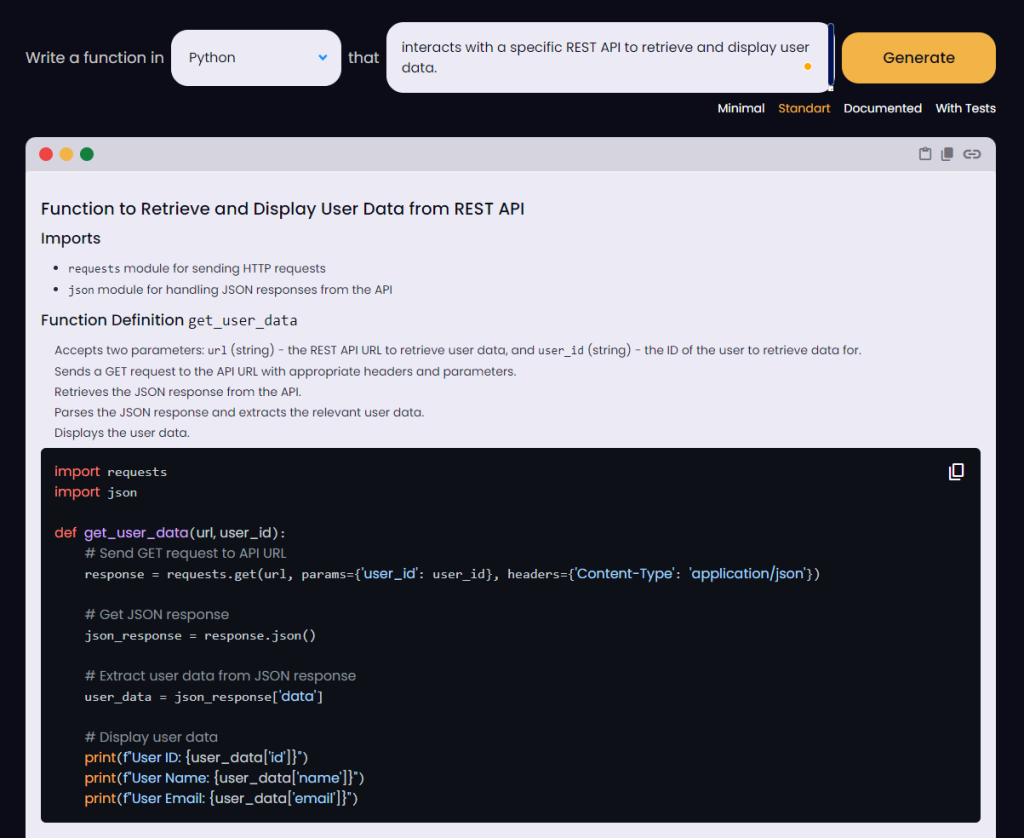
In this instance, the Python Code Generator effortlessly produces a function designed to communicate with a REST API.
Also, the generated code includes mechanisms for sending requests, handling responses, and processing user data obtained from the API.
Up next, let’s consider the advantages.
3 Main Advantages of Using a Python Code Generator
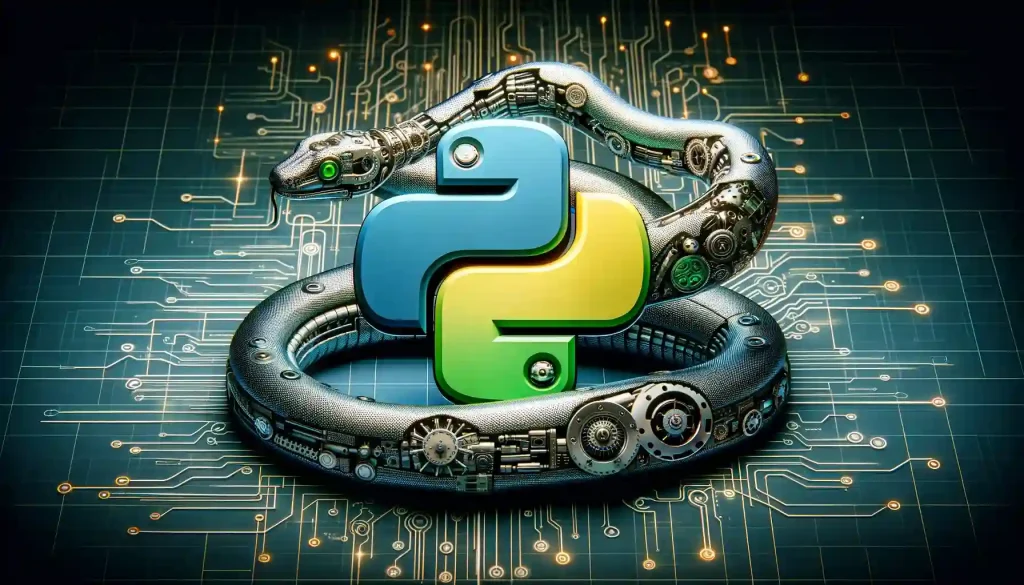
Efficiency: ML and AI algorithms can generate optimized, efficient code that adapts to the problem at hand, speeding up the development process.
Error Reduction: Automated code generation using ML and AI minimizes errors by catching logical inconsistencies and generating cleaner, more accurate code.
Versatility: With their ability to learn from examples, ML and AI-generated code can be applied across a wide range of programming needs, from basic scripting to intricate algorithm development.
Finally, let’s conclude by reflecting on the main points.
Final Thoughts

So, this article has showcased how AI and ML-driven Python Code Generators have transformed the coding landscape.
By automating routine tasks, generating efficient code snippets, and minimizing errors, these tools make programming more accessible while enabling developers to focus on creative aspects of their work.
With examples covering data analysis, web scraping, and JSON schema conversion, it’s clear that Python Code Generators offer a powerful set of features for streamlining coding tasks.
As we continue to explore the potential impact of AI-driven tools in programming, these generators represent an exciting frontier in software development.
Wanna learn more about writing code? Join a Modern Analyst Freestyle Session at the EnterpriseDNA Youtube Channel:
Frequently Asked Questions
How do code generators handle error messages and debugging?
Code generators are designed to minimize common coding errors by following standard programming practices. However, if an error message does appear, users can often find assistance within the tool’s help section or through online support forums.
What is the role of ‘import sys’ in a Python code generator?
The sys module is used in Python code generators for interacting with the system, especially when dealing with command-line arguments or system-related functionality. It’s essential for generators that require user input or need to access system resources.
Can Python code generators format code?
Absolutely. They can be tailored to format code for various specific applications, including web development. Users can input their requirements, and the generator will output code in the desired format, complete with the necessary functions and methods.
How can a code assistant be integrated into a your workflow?
A code assistant can be integrated to provide real-time suggestions and offer explanations for complex programming concepts. This is particularly helpful for novice users or those working on intricate tasks.
Are there any Python code generators that provide tutorials for beginners?
Yes, there are Python code generators that come with built-in explanations, tutorials, and step-by-step guides to assist beginners. These resources are invaluable for those new to programming or those who need guidance on specific tasks.







